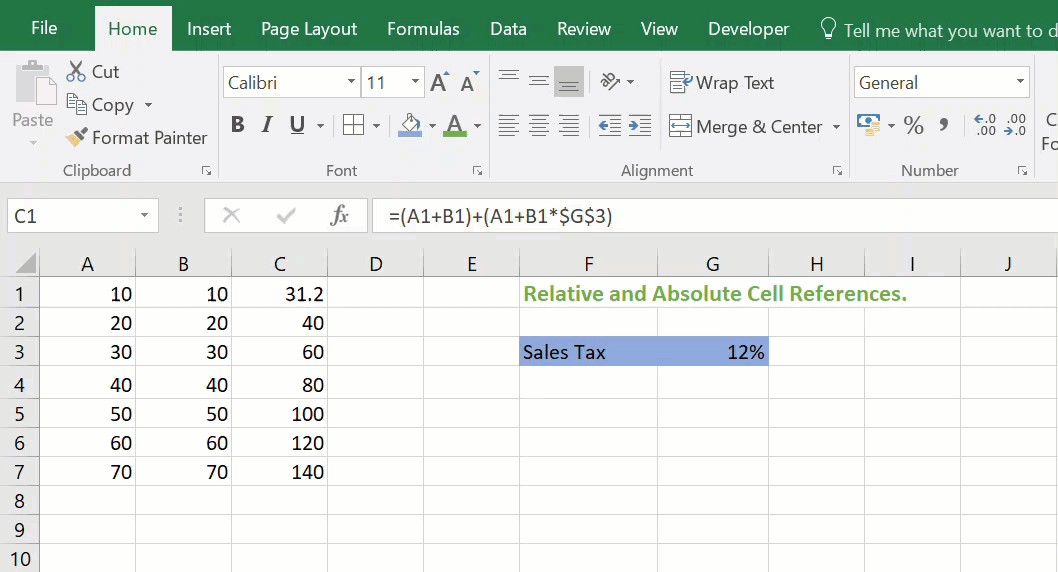Hello Excellers and welcome back to another #formulafriday blog. Today’s tip was a question from a colleague. Thye wanted to know how to calculate a cumulative or running total in your Excel data. Let’s looks at a running total in both a row and a column situation. See my same data sets below for both rows and columns.
Absolute and Relative Cell Referencing Explained.
How to create and copy an Excel formula using relative cell references.
First of all, we need to write our Excel formula in our first cell, which in this example is C1. If we copy the formula =A1+B1 down from row one to row two then Excel automatically adjusts the formula automatically for us. These, as you can see, are really useful when you need to repeat the same formula across many rows or columns.
To copy the formula down just grab the fill handle (the black cross). As an alternative, double-click on the cell that contains your formula to fill down the column of data.
Absolute Excel References.
There may be times when you do not want your cell reference to change. For example when you are coping or filling formulas down or across your Excel worksheet. It is in this scenario that you need to know how to use an absolute cell reference. This enables you to keep the row, the column or both constant.
You can change a relative reference to an absolute one by the use of the $ as an addition to the formula.
Here is a summary of where the $ should sit within your cell reference to achieve your constant or absolute cell reference.
The most commonly used absolute cell reference is that which anchors both the column and the row $A$1. Use F4 on your keyboard to make the cell reference absolute. As you will find this is both the quickest and easiest way.
How to create and copy an Excel formula using relative cell references.
Let’s go back to our worksheet we used previously, and add a value in the worksheet which adds 12% Sales Tax to our values in Column C. The Sales Tax value is stored in cell G3. Next, we will need to use the absolute cell reference $G$3 in our formula as each of the formulas will use the same tax rate. Subsequently, want the cell reference it to remain constant when the formula is copied or and filled to other cells in Column C.
To copy the formula down just grab the fill handle (the black cross) over the cells you want to copy the formula to. As an alternative, double-click on the cell that contains your formula to fill down the column of data.
Toggling between relative and absolute cell referencing.
When creating absolute cell references, we do not need to manually type the $ sign. You can hit the F4 key to make a cell reference absolute. Hit the F4 once the whole cell is made constant like above with our Sales Tax. Hit the F4 to make the column constant. With a final click of F4 will make the Row only constant. If you want to convert an existing formula to absolute then hit F2. This will change Excel into Edit mode. Place your cursor next to or in the reference you want to amend.
The sequence of toggling through the absolute cell reference is as follows.
C1 –> $C$1 –> C$1– > $C1– > C1
So, it is easy to create a running or cumulative total in Excel both down columns and across row. Just anchor the start of your range with an ABSOLUTE reference.
If you want more Excel and VBA tips then sign up to my Monthly Newsletter where I share 3 Tips on the first Wednesday of the month and receive my free Ebook, 30 Excel Tips and check out all of my Formula Friday Blog posts below.
How To Excel At Excel – Formula Friday Blog Posts.
Do You Need Help With An Excel Problem?.
Finally, I am pleased to announce I have teamed up with Excel Rescue, where you can get help with Excel FAST. Why not check it out?.










